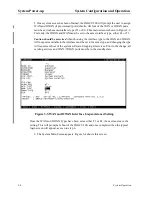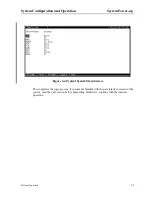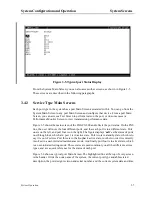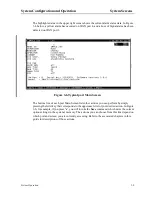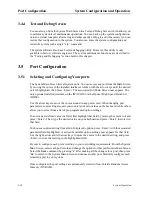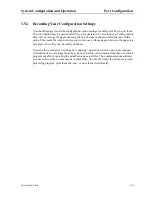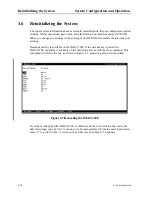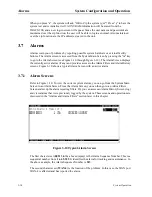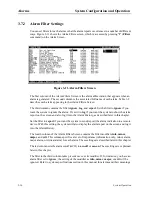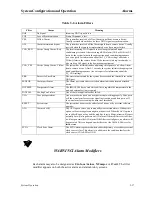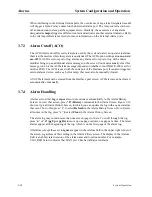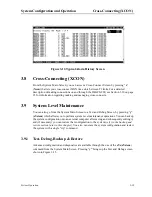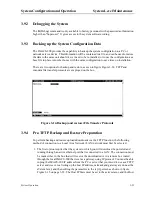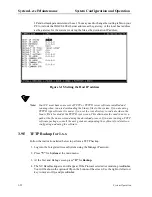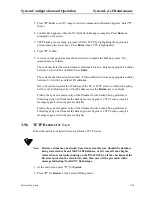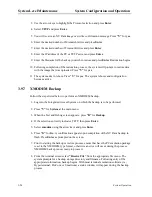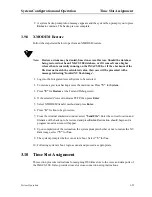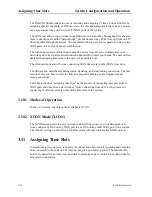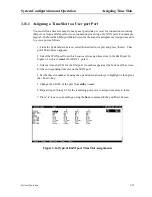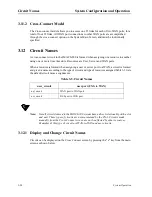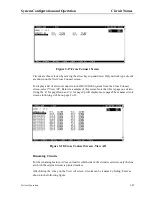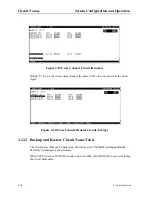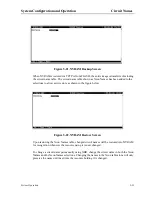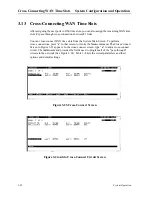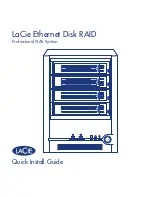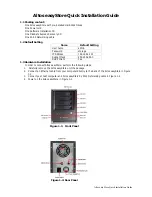
System Operation
3-17
System Configuration and Operation
Alarms
Table 3-2. Alarm Filters
WARNING!Alarm Modifiers
Each alarm may also be designated as I=info, m=minor, M=major or C=crit. The filter
modifier appears on both the active alarm and alarm history screens.
Filter
Alarm
Meaning
NOS
No Signal
Incoming WAN signal is lost.
LOS
Loss of Synchronization
Frame Alignment is lost.
YEL
Yellow Alarm
The system has received a Yellow Alarm signal from a remote device.
Usually received when the device loses WAN signal or synchronization.
AIS
Alarm Information Signal
The system has received a Blue Alarm signal from a remote device. Usually
received when the remote or intermediate device has a major failure.
CGA_RED
Carrier Group Alarm - Red
The local incoming WAN signal has a serious problem and trunk
conditioning is started. After receiving a RED alarm (NOS or LOS) for 2-3
seconds, the system initiates the appropriate trunk conditioning sequence
(see voice ports for information about the TC_CGA setting) and sends a
Yellow Alarm to the remote device. If the system is in drop/insert mode, it
also sends an AIS signal to the downstream equipment.
CGA_YEL
Carrier Group Alarm - Yellow
The system has initiated trunk conditioning in response to a Yellow Alarm
from a remote device. After 2-3 seconds, the system initiates the appropriate
trunk conditioning sequence (see voice ports for information about the
TC_CGA setting).
ERR
Excessive Error Rate
The error rate measured by the system has exceeded the threshold set on the
WAN port.
SENSOR
Alarm port Sensor
The Alarm port sensor has received an alarm indication from an attached
device.
HI-TEMP
Temperature Alarm
The IMACS-200 has exceeded it’s ability to regulate the temperature in the
unit, and external action is required.
FANFAIL
Cooling Fan Failure
One of the two supplied fans has failed.
UCA
User port/port alarm
One or more active ports on a user port are not working properly. Voice ports
will show an alarm for excessive signaling transitions and data ports will
show an alarm for exceeding the data error threshold.
RESET
System reset
The system has been reset by either loss of power or by a system software
upgrade.
ACO
Alarm Cut-Off
The ACO option forces you to manually clear certain alarms. Without this
option, self-correcting alarms might not be noticed. When the ACO option is
set to either Report or Log and the modifier is set to Major, alarms will report
normally but will also generate an ACO alarm. If the modifier is set to Minor,
it will not generate the ACO alarm. If the filter is set to Ignore, no alarms will
be generated. This can depend on whether or not the IMACS-200 is set for
latch or cur.
SYNC
Clock Sync Alarm
The SYNC alarm is generated when either the primary or secondary external
clock source is lost. This alarm is in addition to the condition that lost the
clock source (CGA-RED or OOS).
Summary of Contents for IMA CS-200 System
Page 18: ...8 Table of Contents Model No Running Head Table of Contents...
Page 22: ...4 List of Figures Model No Running Head List of Figures...
Page 130: ...4 46 General Features Model No Running Head CPU Troubleshooting IMACS 200 General Features...
Page 148: ...5 18 WAN Ports Model No Running Head WAN port Troubleshooting WAN ports...
Page 202: ...9 14 High Speed Data Ports Model No Running Head...
Page 208: ...10 6 OHSU Ports Model No Running Head...
Page 230: ...12 16 IPR Model No Running Head IPR Configuration Screens and Settings IP Routing...
Page 264: ...A 12 System Standards and Specifications Model No Running Head IPR Server Specifications...
Page 274: ...B 10 Error Messages Model No Running Head...
Page 294: ...20 Glossary Model No Running Head Zero Code Suppression...


